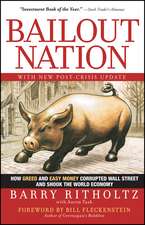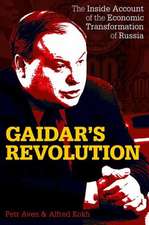What Makes a Great Exhibition?
Editat de Paula Marincolaen Limba Engleză Paperback – 15 feb 2007
For better or worse, museums are changing from forbidding bastions of rare art into audience-friendly institutions that often specialize in “blockbuster” exhibitions designed to draw crowds. But in the midst of this sea change, one largely unanswered question stands out: “What makes a great exhibition?” Some of the world’s leading curators and art historians try to answer this question here, as they examine the elements of a museum exhibition from every angle.
What Makes a Great Exhibition? investigates the challenges facing American and European contemporary art in particular, exploring such issues as group exhibitions, video and craft, and the ways that architecture influences the nature of the exhibitions under its roof. The distinguished contributors address diverse topics, including Studio Museum in Harlem director Thelma Golden’s examination of ethnically-focused exhibitions; and Robert Storr, director of the 2007 Venice Biennale and formerly of the Museum of Modern Art, on the meaning of “exhibition and “exhibitionmaker.”
A thought-provoking volume on the practice of curatorial work and the mission of modern museums, What Makes A Great Exhibition? will be indispensable reading for all art professionals and scholars working today.
What Makes a Great Exhibition? investigates the challenges facing American and European contemporary art in particular, exploring such issues as group exhibitions, video and craft, and the ways that architecture influences the nature of the exhibitions under its roof. The distinguished contributors address diverse topics, including Studio Museum in Harlem director Thelma Golden’s examination of ethnically-focused exhibitions; and Robert Storr, director of the 2007 Venice Biennale and formerly of the Museum of Modern Art, on the meaning of “exhibition and “exhibitionmaker.”
A thought-provoking volume on the practice of curatorial work and the mission of modern museums, What Makes A Great Exhibition? will be indispensable reading for all art professionals and scholars working today.
Preț: 97.53 lei
Preț vechi: 117.86 lei
-17% Nou
Puncte Express: 146
Preț estimativ în valută:
18.66€ • 19.38$ • 15.56£
18.66€ • 19.38$ • 15.56£
Carte disponibilă
Livrare economică 01-08 martie
Livrare express 18-22 februarie pentru 49.15 lei
Preluare comenzi: 021 569.72.76
Specificații
ISBN-13: 9780970834614
ISBN-10: 0970834616
Pagini: 184
Ilustrații: 56 halftones
Dimensiuni: 165 x 235 x 20 mm
Greutate: 0.49 kg
Editura: REAKTION BOOKS
Colecția Reaktion Books
ISBN-10: 0970834616
Pagini: 184
Ilustrații: 56 halftones
Dimensiuni: 165 x 235 x 20 mm
Greutate: 0.49 kg
Editura: REAKTION BOOKS
Colecția Reaktion Books
Notă biografică
Paula Marincola is director of the Philadelphia Exhibitions Initiative.
Cuprins
Introduction: Practice Makes Perfect - Paula Marincola
Show and Tell - Robert Storr
In Lieu of Higher Ground - Lynne Cooke
You Talking To Me? On Curating Group Shows that Give You a Chance to Join the Group - Ralph Rugoff
The Unstable Institution - Carlos Basualdo
With Our Faces to the Rising Sun - Thelma Golden with Glenn Ligon
Mies's New National Gallery: Empty and Full - Detlef Mertins
Design and Architecture - Paola Antonelli interviewed by Bennett Simpson
Who's afraid of gift-wrapped kazoos? - Jeffrey Kipnis
Handy-Crafts: A Doctrine - Glenn Adamson
Temple/White Cube/Laboratory - Iwona Blazwick
Making Space for Art - Mary Jane Jacob
Questions of Practice - Mark Nash
Wall Text - Ingrid Schaffner
Afterword - Marian Godfrey
Acknowledgments - Paula Marincola
Recenzii
"With the proliferation of degree courses now churning out graduates in the subject, this will provide informative reading both to those starting their curating careers and those already established in the field."
"A unique compiliation of essays by well-known curators and active participants within this field, it is less an anthology and more an exhibition itself. . . . Despite the authoritative stance from which these essays stem, together they refreshingly bring the discussion back to the true centre of their work: the artwork itself. . . . By bridging the gap between question and answer, What Makes a Great Exhibition? liberates exhibitions to a position of question-catalyst."










